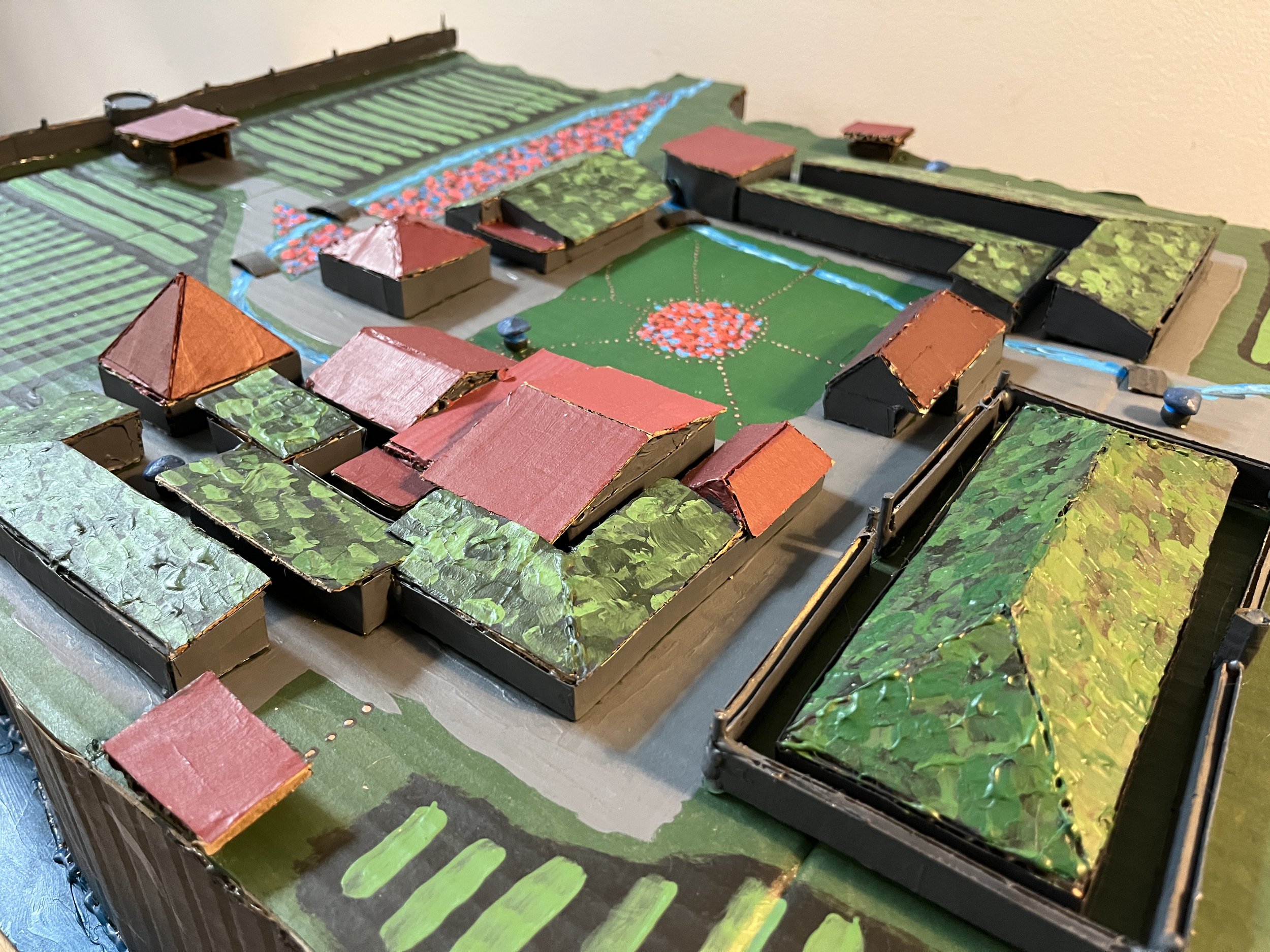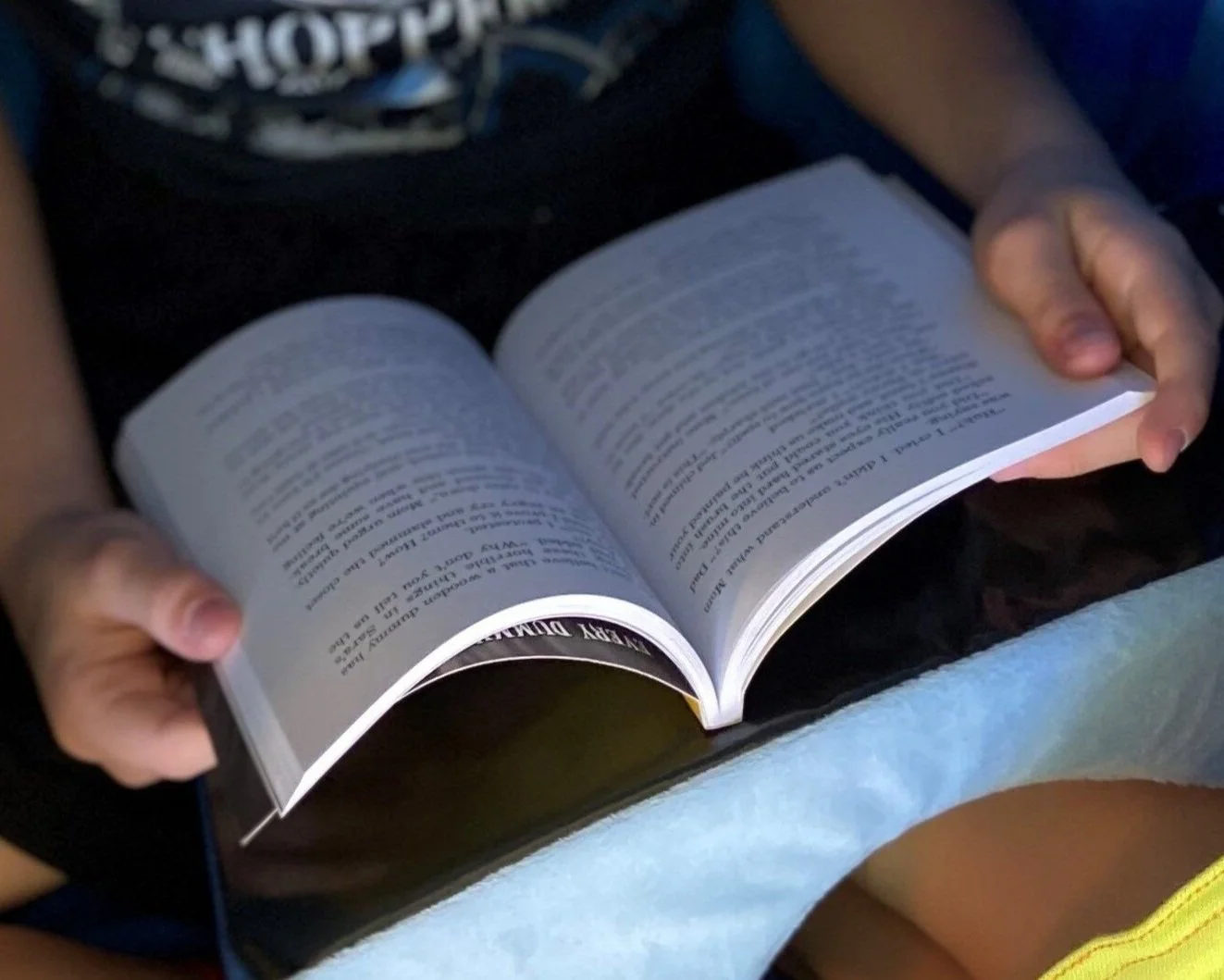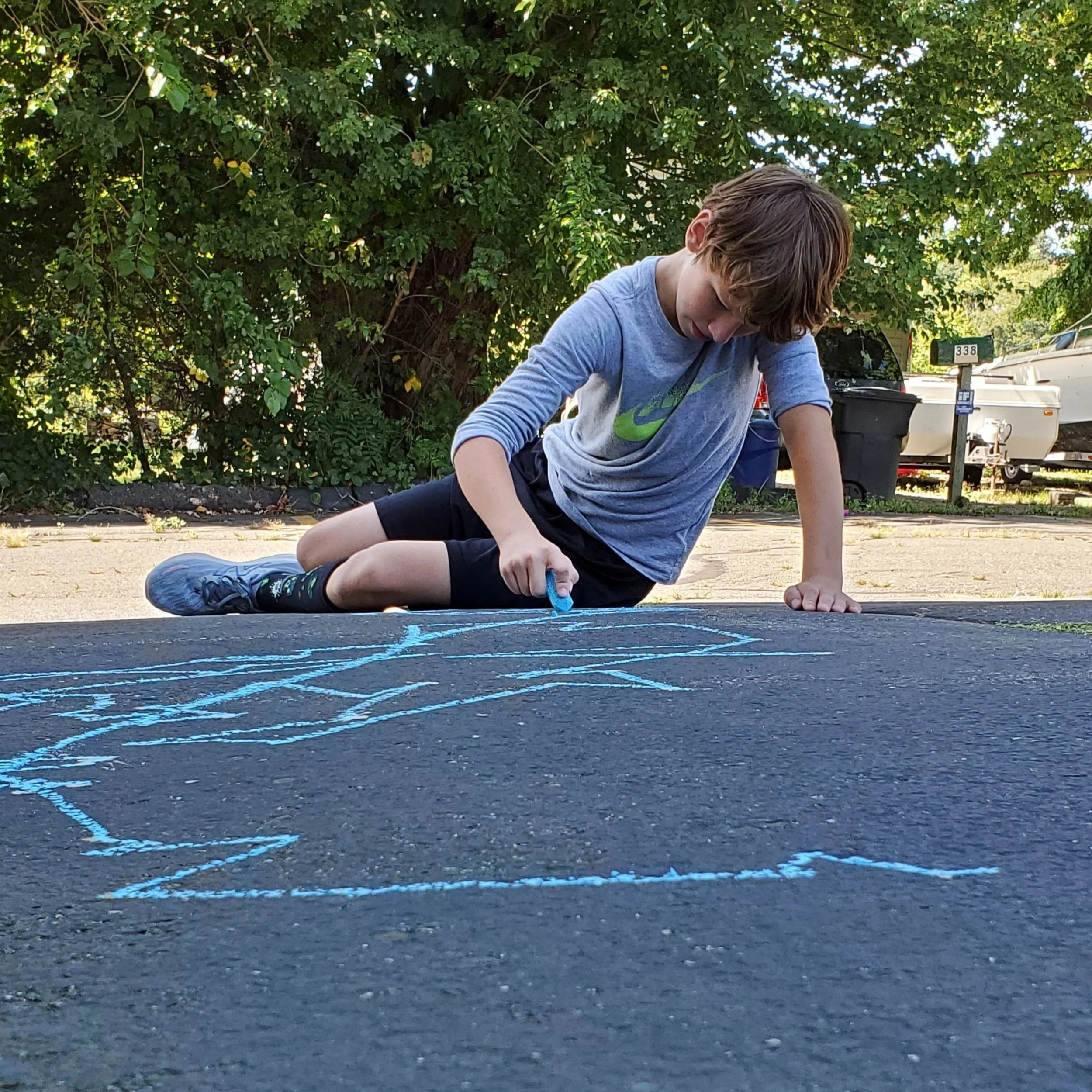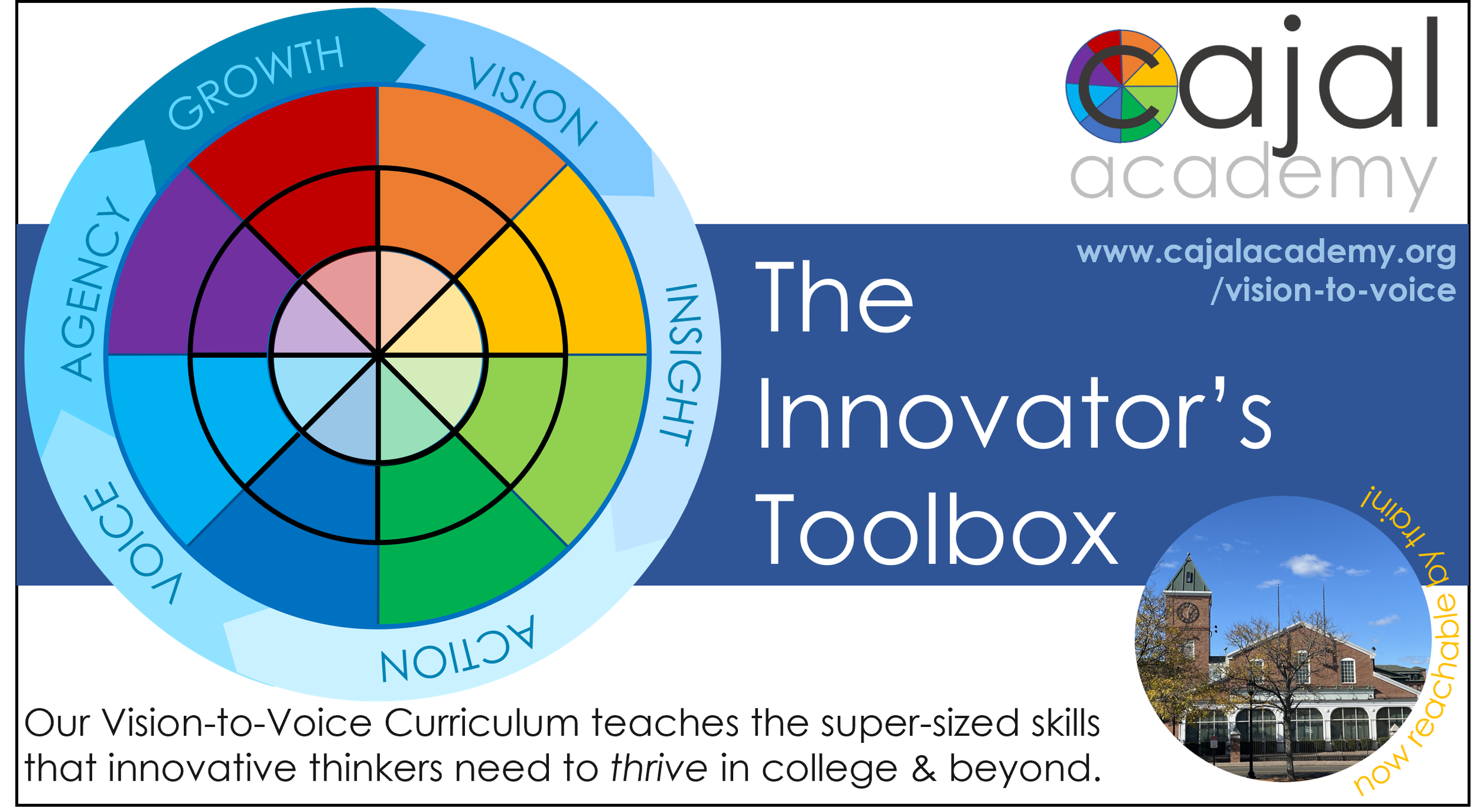A CATALYST to the future you want to lead
Traditional special education fills the gap between a child’s profile and average learning and social-emotional abilities.
We are the first school to use modern science to transform their profiles, reducing the gap itself.
We use the data in each child’s profile to develop a comprehensive Student Growth Catalyst: a highly-individualized, multi-disciplinary program reducing or even removing learning and in some cases social-emotional and executive function disabilities, and the behaviors they create, through a research-backed, neurodevelopmental approach that’s only available at Cajal Academy.
Special education programs traditionally are based on the premise that a child’s “disabilities” are immutable, and thus focuses on removing the barriers to academic and social access that those disabilities pose. Yet neuroscience now demonstrates that in fact, the human brain is constantly rewiring itself in response to the tasks that we ask it to perform.
Started by a mom who refused to accept that her children’s futures would be limited by challenges that science suggested could be removed, Cajal Academy’s expert team has put this science to work, and has developed a research-backed approach that is successfully transforming student profiles, by filling the holes in their neural networks that lead to those presentations—thus removing the gap itself. This unlocks students’ gifts, transforms student lives and has the potential to dramatically reduces the cost of meeting their needs over the course of a K-12 education.
This is a massive break-through for the field of education and a fundamental shift in how we understand and address children’s needs, and indeed what’s possible for K-12 education as a whole.
Scroll down to find out more about this exciting new approach and the science behind it.
A data-driven and research-backed approach that reduces or even removes learning and in some cases executive function and social-emotional disabilities, by rewiring foundational skills required to perform the affected tasks
1. We set aside diagnostic labels and break each task where a child struggles into the individual skills required to perform it, through our ground-breaking Neuro- and Trauma-Informed Approach to understanding student learning and social-emotional needs and the behaviors they drive
2. We use the data in the child’s profile to identify those “splinter” skills that drive their areas of challenge, through our Neuro- and Trauma-Informed Approach: a paradigm-shift in how we understand student needs
3. We develop Comprehensive, multi-disciplinary “Student Growth Catalysts:” highly-individualized programs that integrate a neurodevelopmental roadmap work to increase capacity with the social-emotional shifts required for growth
4. We use well-established therapies in new ways to rewire the way the student performs the targeted skills, through a research-backed, neurodevelopmental approach
5. Students join at various points in this journey, depending on where in the neurodevelopmental chain the therapeutic work begins, and their programs are seamlessly adjusted accordingly. Tuitions are reevaluated at the end of each academic year, and reduced as they progress to the next Catalyst stage.
Customized Programs for Even the Most Complex Learners
This research-backed approach has proven successful at propelling unexpected levels of growth in even the most complex learner, because it identifies and improves those foundational skills that can drive multiple overlapping learning disabilities, complex social-emotional and executive function needs and the maladaptive emotional or behavioral results as a child attempts to adapt to this difficult experience.
Use these links to learn more about how we apply this approach across a range of learning, social-emotional and neurophysio needs.
Learning Disabilities
ADHD, dyslexia, dysgraphia, dyspraxia, dyscalculia and language processing disorders
Social-emotional Challenges
Social anxiety, depression, social cognition challenges, ASD, emotional regulation and more
Neurophysio & Medical Conditions
Sensory processing disorder, gross motor coordination, autonomic regulatory challenges and chronic medical conditions including Ehlers-Danlos Syndrome
Integrated diagnostic and clinical expertise
Each of our clinicians is an experienced independent expert evaluator and has the medical-level expertise that is typically only available in community-based clinical settings—in fact, our neuropsychologist, Steven Mattis, PhD, ABPP, has been recognized as one of the founding fathers of the field of clinical neuropsychology in the United States!. These clinicians are providing direct services to our students, honing our ground-breaking Neuroplasticity Interventions and other special needs interventions and providing ongoing clinical monitoring to assess student growth within each child’s individualized Student Growth Catalyst. As student demonstrate progress on the clinical metrics that go into each neurodevelopmental Catalyst Stage, we seamlessly shift the mix, quantity and focus of the child’s therapeutic services to target the next stage in their development, following our exclusive Catalyst Method. This is a research-backed and ground-breaking methodology that requires an integrated and coordinated approach across multiple therapeutic disciplines, so service decisions are made by our clinical team. Parents receive twice-annual collaborative reports integrating these insights into a cohesive understanding of where your child is today, and what they need to grow tomorrow.
Case Studies: Transformational changes that redefine what’s possible when we apply the science of how kids learn, socialize and grow
Check out these case studies highlighting just a few of the success stories students have experienced in our program, and check back for more!
Full integration into strengths-based academic and leadership programming tailored to the needs of inherently innovative kids
Each Student Growth Catalyst is integrated into a comprehensive program developing the super-sized skills students will need for a future defined by their strengths, so they’re ready to lead as we unlock their gifts.
Our Student Growth Catalysts and Vision to Voice Curriculum work together. Our Catalyst Method opens up the possibility of a future defined by a child’s strengths, by reducing the challenges that limit the settings or activities where they can thrive. At the same time, our Vision to Voice Curriculum develops the executive function, leadership and self-care skills that they’ll need to give voice to their visions by turning their insights into action.
This break-through is redefining what’s possible for a child and for K-12 education as a whole
Outside of Cajal Academy, the field of special education generally works from the presumption that because learning disabilities come from the way we’re wired, they are immutable. Yet modern neuroscience demonstrates irrefutably that the brain is constantly re-wiring itself: a process that happens every day until we die, and at every age, in response to the tasks that we call on our brain to perform. This is the science of the strategies that occupational and physical therapists have developed for decades.
Our break-through educational program started from two moms’ simple question: “If the brain is constantly rewiring itself then what if we could use that process and the data in a child’s profile to change the way they’re wired and remove those disabilities? And if we did, how would we make sure they had the skills and curriculum they need to be ready to use those skills, and to lead?”
We are already receiving requests from public school districts and from individual families across the country and the world who are eager to learn our techniques. Interested school districts are encouraged to contact us to join the conversation as we evaluate opportunities to spread the impacts of our educational innovations far beyond the walls of our small school.
Attend an Information Session to Learn More
Apply Today
Immediate, Summer and Fall Placements




























